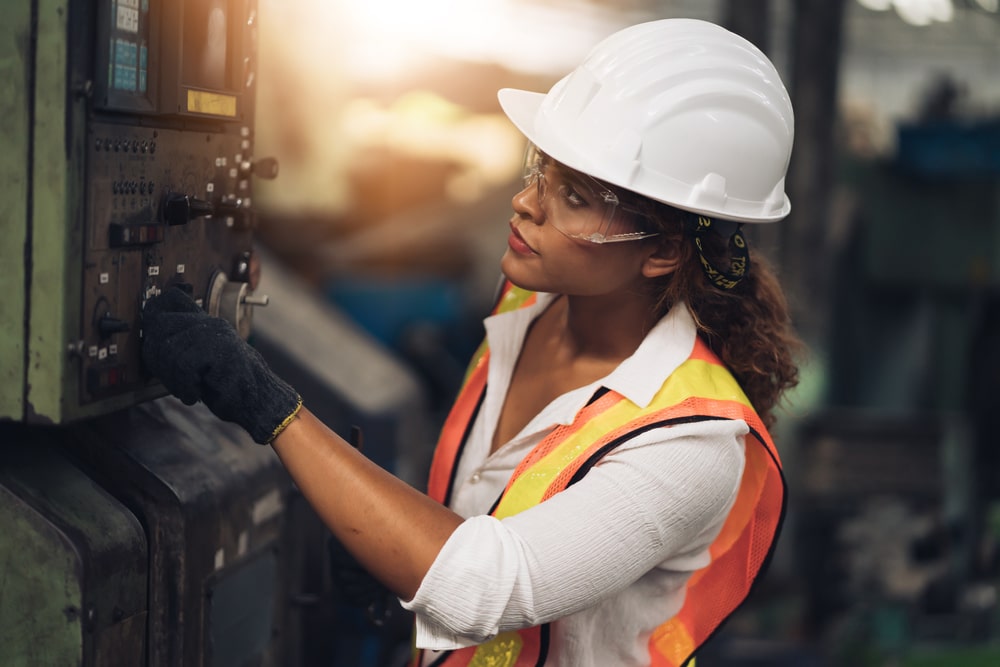Sector - Employment
How alternate educational routes encourage women into the construction industry

Being in the midst of ‘women in construction week’, it’s time we look at one of the main criticisms that hits the industry.
It’s clear we’re still a long way off equality in construction. Women account for almost 50% of the UK’s workforce, yet only represent 13% of the construction industry. Although this figure has been slowly rising over the past few years, there is still a lot that can be done to help improve this statistic.
One of the leading firms working on diversifying their workforce is Munday + Cramer. They are a multi-disciplinary practice working across all different areas of building and construction, from architecture, surveying and project management services. They have put a huge focus on diversifying their workforce and have been striving over the past few years to ensure everyone has equal opportunities. One of Munday + Cramer’s directors, Lee Hatwell has been the driving force behind this focus, and he believes in order for the industry to improve the lack of gender diversity, change needs to start at the very roots – education. We spoke to Lee about how the industry can diversify its workforce.
The current problems
The conversation around diversifying the construction industry has always been centred around how businesses can offer employees more incentives that appeal to women, such as flexible working hours for childcare. However, this only helps women once they’ve already decided to enter construction, instead the discussion needs to focus on what attracts women to the industry in the first place.
In addition to this, the inequality itself is something that is putting women off construction. Ultimately, if they can’t see themselves being represented from an early age, they are unlikely to pursue a career in this sector, or even realise it’s an option.
There are misconceptions that the main route to enter the industry is via ‘the tools’, which is more commonly very male-dominated. However, offering more educational opportunities debunks this. In fact, there are countless routes into the industry that involve a range of different disciples, skillsets and are accessible for everyone.
Educational routes
There is a wide range of educational routes that lead into the construction industry – from hands-on apprenticeships and the recently introduced T-levels, to the more traditional degree and other further educational courses. These kinds of educational routes open more opportunities to wider sectors of society.
An example of how successful this can be is Georgia Dear, a 23-year-old apprentice at Munday + Cramer. Georgia originally joined the practice as a receptionist after finishing her A-levels. M+C’s directors quickly recognised her potential and offered her a chance to study for a Degree in Building Surveying by way of a Degree Apprenticeship. Through this line of study, Georgia will be fast-tracked to gain her Chartered Surveyor status. Having begun in an administrative role, this career path in the building and construction industry is not something she had previously considered, but the educational opportunity offered her an alternate route and position in the sector.
Providing diverse opportunities
In order to attract diversity, you need to offer it. It’s in situations such as Georgia’s that demonstrate how alternate educational routes are showing an increasing number of women that it’s not just on-site jobs available. In fact, there are countless other roles that may be more suited, that they may not have been aware of.
There are so many different courses available for varied levels of qualifications in the likes of architecture, building surveying and project management etc. Had Georgia have been presented with the options of a career in construction in school for example, she might have found it sooner. As such, Munday + Cramer are working towards encouraging young people at an earlier stage, to consider this industry by holding practical career days and workshops at local schools.
The bottom-line is that the less hands-on roles, which usually require traditional qualifications and higher education are more appealing to women, over manual labour roles. This is what the figures are indicating as currently, of the 13% of women that are in the construction industry, only 1% work on-site. Although this is also a percentage that needs to be worked on, it does therefore indicate that if we work on offering more educational opportunities and alternate routes into the industry, an increasing number of women may be more inclined to enter it.
By encouraging more women into the industry at entry level, it will have an extremely positive influence as we grow and move forward with a more diverse range of people, perspectives, and skillsets in the workforce. The landscape is everchanging and by offering more educational routes, the construction industry will continue to diversify and open up opportunities to more women. However, in order for this to happen, more practise like Munday + Cramer need to work together to provide opportunities such as apprenticeships and T-levels.
Click here for more information about women in construction week.
If you would like to read more stories like this, then please click here
Related Articles
More Employment News
- How employee wellness boosts profits in construction
31 Oct 25
Healthy teams deliver better margins. Here’s how wellness drives productivity, retention, and profit in UK
- Renewed optimism in Construction sector as survey reveals growth and skills plans
23 Jul 25
Construction sector with project professionals anticipating project growth.
- University joins forces to address critical construction and housebuilding skills gap
2 Jul 25
The University of Salford is collaborating with Cube Thinking to support Barratt Homes in bridging the shift in skills requirements.






